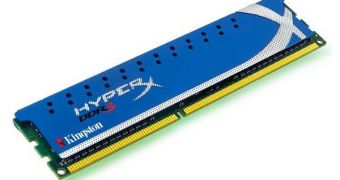Even as demand continues to be weak for DRAM, makers of such memory solutions decided they can no longer reap any sort of benefit from letting prices slide any lower than they already are.
It really does look like the DRAM market has still not recovered much, something that, one might say, makers of such chips figured would last regardless of whether or not they keep cutting prices.
Memory was already having demand problem late last year and that situation kept up through the first and second quarters.
Granted, there were a few episodes when spot prices recovered slightly, with one of the more promising (in suppliers' view) developments being cause, ironically enough, by the Japan disaster.
Recently it was assessed that the aftereffects on the world electronics market would fade away by the end of the third quarter.
For the DRAM segment, however, this does not mean much, since it only implies that the weak demand for products will go on.
Digitimes has, once again, produced a report in regards to the current situation, revealing, among other things, that Kingston Technology, like others, while it had been slowly lowering DRAM prices, has decided to stop the process and just keep the current quotes until things start to pick up, whenever that is.
That being said, spot prices of 2 Gb branded DDR3 chips were of S$1.49 at noon, July 1, 2011, while branded ones were $1.28.
Conversely, branded 4 GB DDR3 modules and 2 GB DDR3 modules now cost, on average, $13 and $23, respectively.
As for the NAND segment, the outlook is quite pessimistic, even with how Toshiba is no longer suffering from tight supply caused by the March 11 event.
Seasonality has cause oversupply, meaning that it will be difficult, if at all possible (compared to before), to maintain the level of profitability companies wish for.

 14 DAY TRIAL //
14 DAY TRIAL //